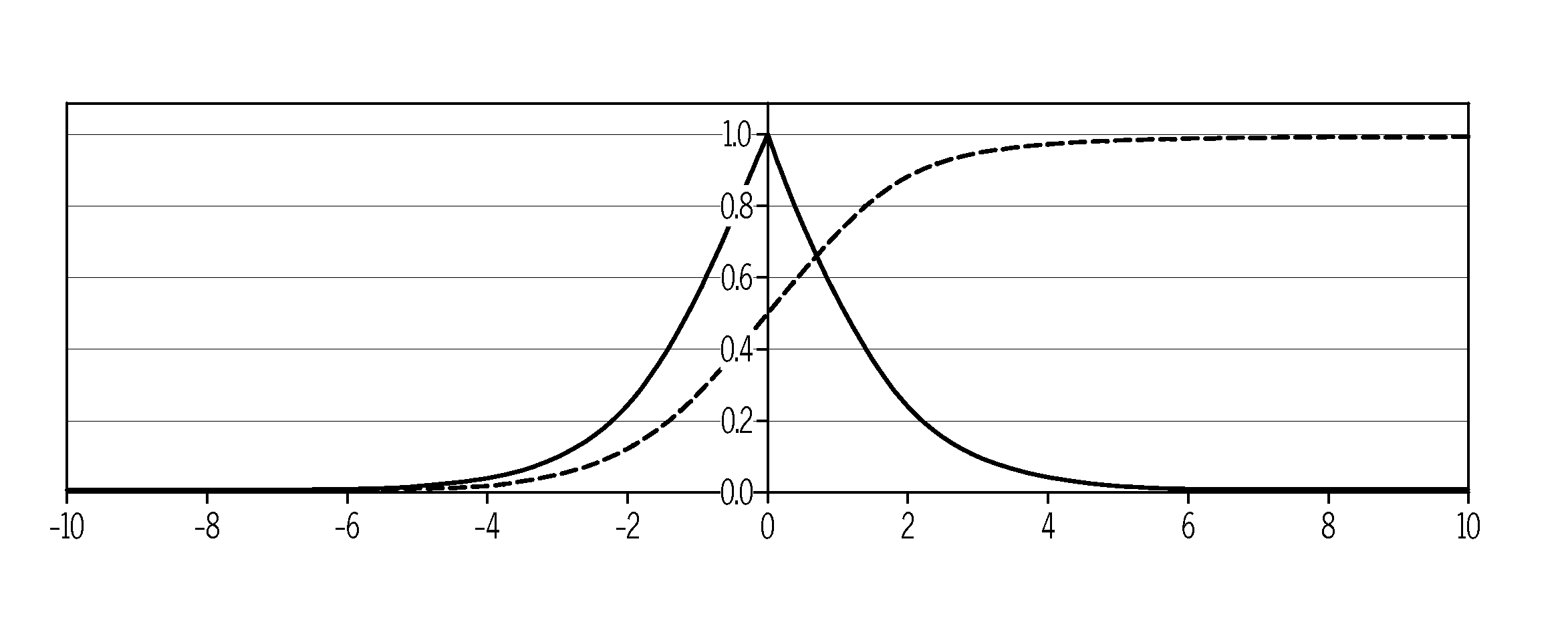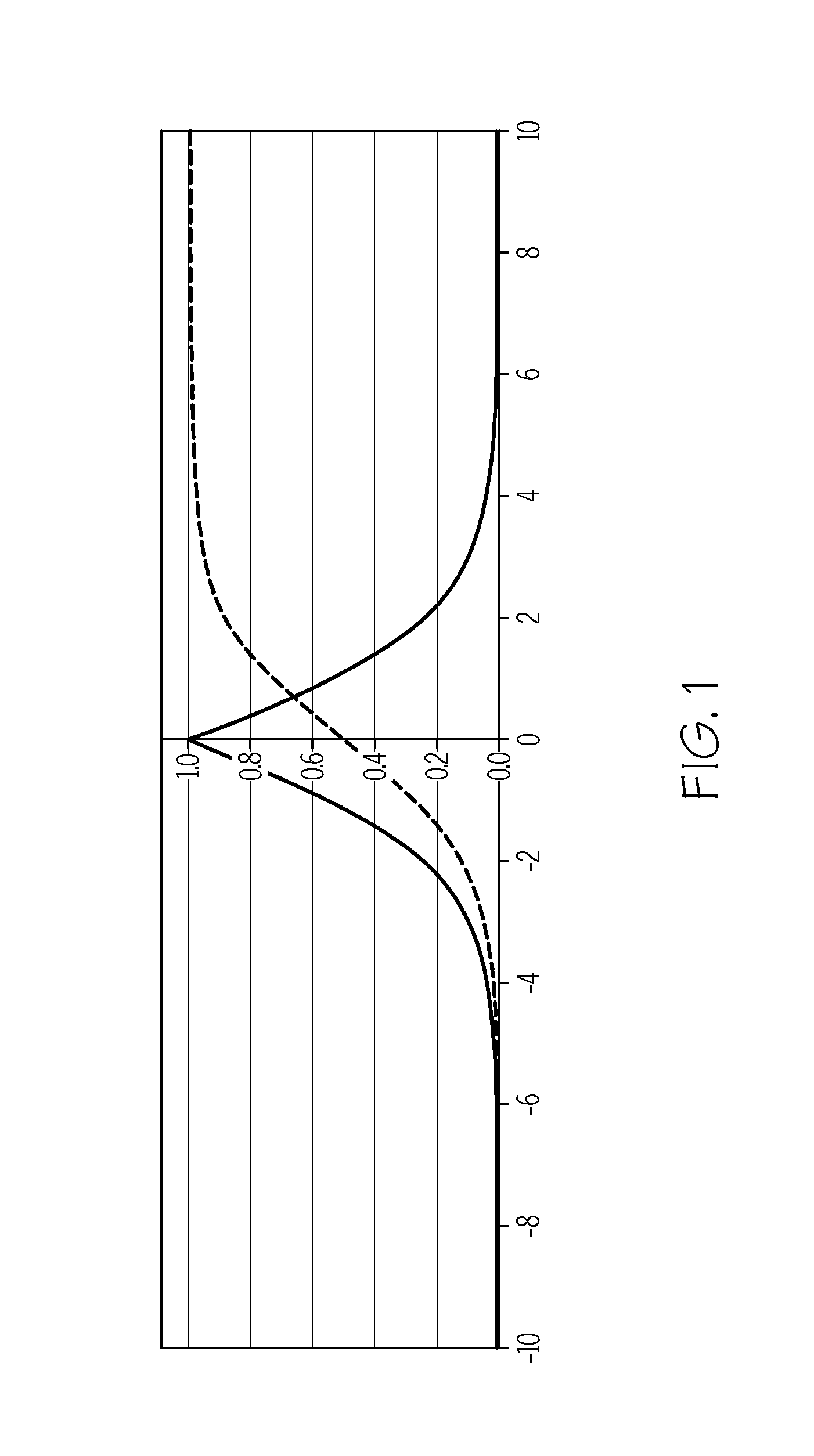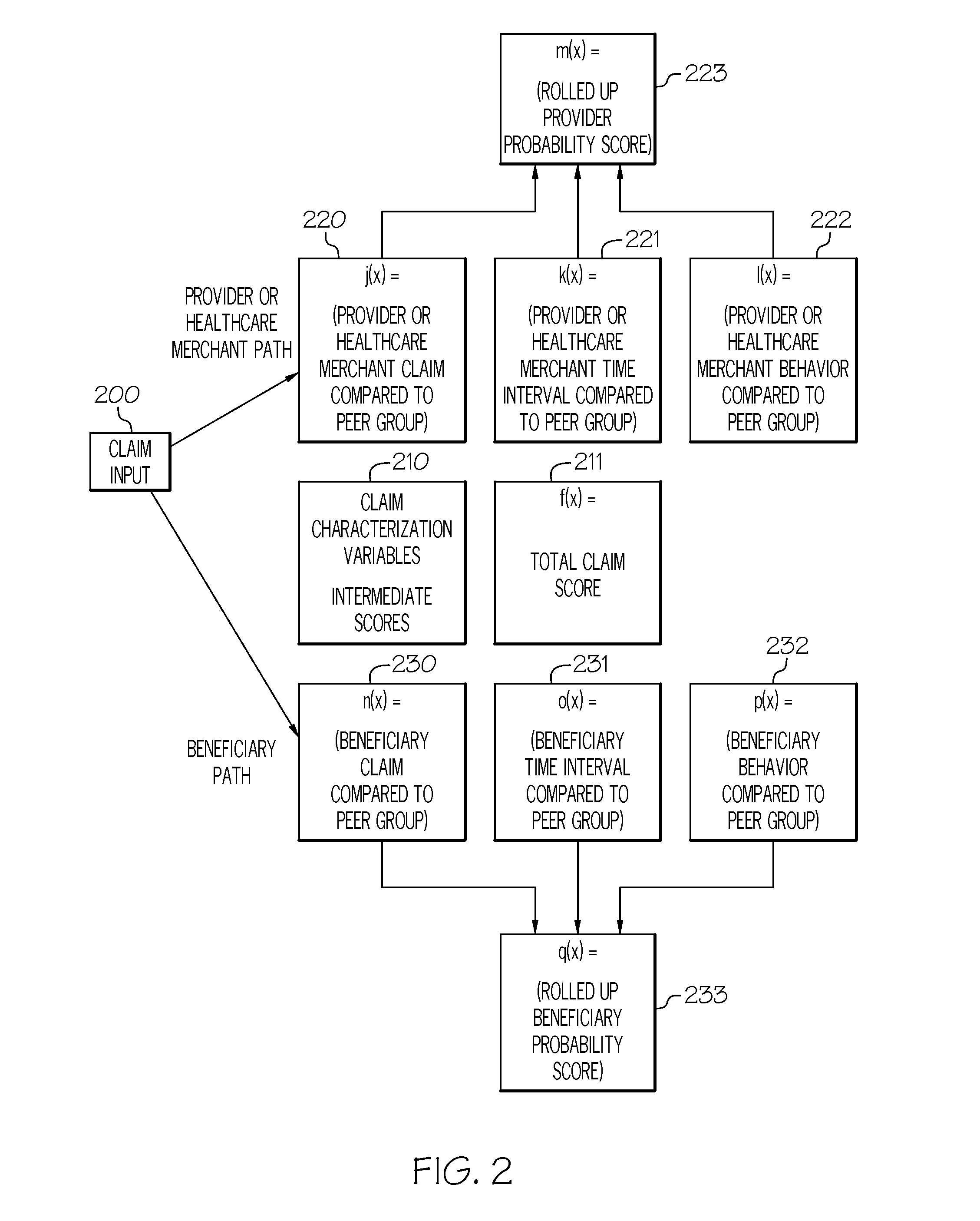Characterizing healthcare provider, claim, beneficiary and healthcare merchant normal behavior using non-parametric statistical outlier detection scoring techniques
- Summary
- Abstract
- Description
- Claims
- Application Information
AI Technical Summary
Benefits of technology
Problems solved by technology
Method used
Image
Examples
Embodiment Construction
[0090]This invention uses non-parametric statistics and mathematical probability techniques to analyze historical healthcare claims data and to create a “characterization template” or “characterization scoring model” based on current and historical data. This model can then be used to score current, incoming claims, providers, beneficiaries or healthcare merchants for the purpose of evaluating whether an observation (claim, for example), group of claims, provider, beneficiary or healthcare merchant is considered to exhibit “normal good behavior” or “typical good behavior” compared to the historical data and compared to relevant peer groups. Each of the variables on the incoming group of claims is converted to an estimate that the individual variable displays “normal” or “typical” characteristics or values. Some entities, in a general sense, refer to this mathematical estimate as a “profile”. The goal then is to build a characterization scoring model from historical medical claims fr...
PUM
 Login to View More
Login to View More Abstract
Description
Claims
Application Information
 Login to View More
Login to View More - R&D
- Intellectual Property
- Life Sciences
- Materials
- Tech Scout
- Unparalleled Data Quality
- Higher Quality Content
- 60% Fewer Hallucinations
Browse by: Latest US Patents, China's latest patents, Technical Efficacy Thesaurus, Application Domain, Technology Topic, Popular Technical Reports.
© 2025 PatSnap. All rights reserved.Legal|Privacy policy|Modern Slavery Act Transparency Statement|Sitemap|About US| Contact US: help@patsnap.com



